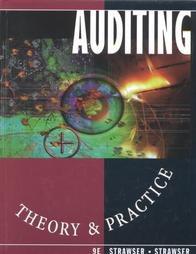Question
A. Explain the accounting rationale behind deferring revenues. In which section of Teslas balance sheet do deferred revenues show up? Why? B. Consistent with US


A. Explain the accounting rationale behind deferring revenues. In which section of Teslas balance sheet do deferred revenues show up? Why?
B. Consistent with US GAAPs revenue recognition criteria Tesla typically recognizes automobile sales revenue (but not the associated services such as internet connectivity etc.) at the time the customer receives the automobile. Suppose effective beginning of fiscal 2016 (i.e., no effect on prior years) Tesla changed its policy for automobile sales and started recognizing revenues as soon as the company receives the order regardless of when the delivery is made. Would revenues for fiscal 2016 be higher, lower, or the same?
C. Using 2016 balance sheet and income statement data, can you estimate how much cash Tesla collected from its customers? (Hint: You should start with the total revenues and make adjustments. Revenues are composed of cash and credit sales (i.e., changes in in A/R) but does not include any cash collected in advance (i.e., changes in deferred revenues)).
D.When does Tesla recognize the transportation costs for car deliveries as an expense? Which accounting principle requires this kind of treatment?
E.When does Tesla recognize marketing expenses? How is this treatment different from that of transportation costs?
Both Balance Sheet and Income Statement are posted above.
COMPUTER PROGRAMS AND SYSTEMS, INC. CONSOLIDATED STATEMENTS OF INCOME (In thousands, except per share data) Year ended December 31 2016 2015 2014 Sales revenues: System sales and support Business management, consulting and managed IT services 197,874 S 69,398 267,272 118,385 S 63,789 182,174 148,652 56,090 204,742 Total sales revenues Costs of sales (exclusive of amortization shown separately below): 89,543 39,715 129,258 138,014 52,500 35,216 87,716 94,458 System sales and support Business management, consulting and managed IT services 59,079 31,716 90,795 113,947 Total costs of sales Gross profit Operating expenses Product development 32,621 27,194 53,642 10,182 123,639 14,375 Sales and marketing General and administrative Amortization ofacquisition-related intangibles 14,229 18,333 36,810 14,622 19,720 30,018 Total operating expenses Operating income Other income (expense): 69,372 25,086 64,360 49,587 220 (6,609) (6,389) Other income 405 152 Interest expense Total other income (expense) Income before taxes Provision for income taxes Net income Net income per share basic Net income per share - diluted Weighted average shares outstanding used in per common share computations: 152 49,739 16,819 32,920 2.94 2.94 405 25,491 4,053 3,933 S$ 7,148 18,343S 0.29 S 1.62 S 0.29 $ 1.62 S Basic Diluted 13,255 13,255 11,026 11,026 11,083Step by Step Solution
There are 3 Steps involved in it
Step: 1

Get Instant Access to Expert-Tailored Solutions
See step-by-step solutions with expert insights and AI powered tools for academic success
Step: 2

Step: 3

Ace Your Homework with AI
Get the answers you need in no time with our AI-driven, step-by-step assistance
Get Started


